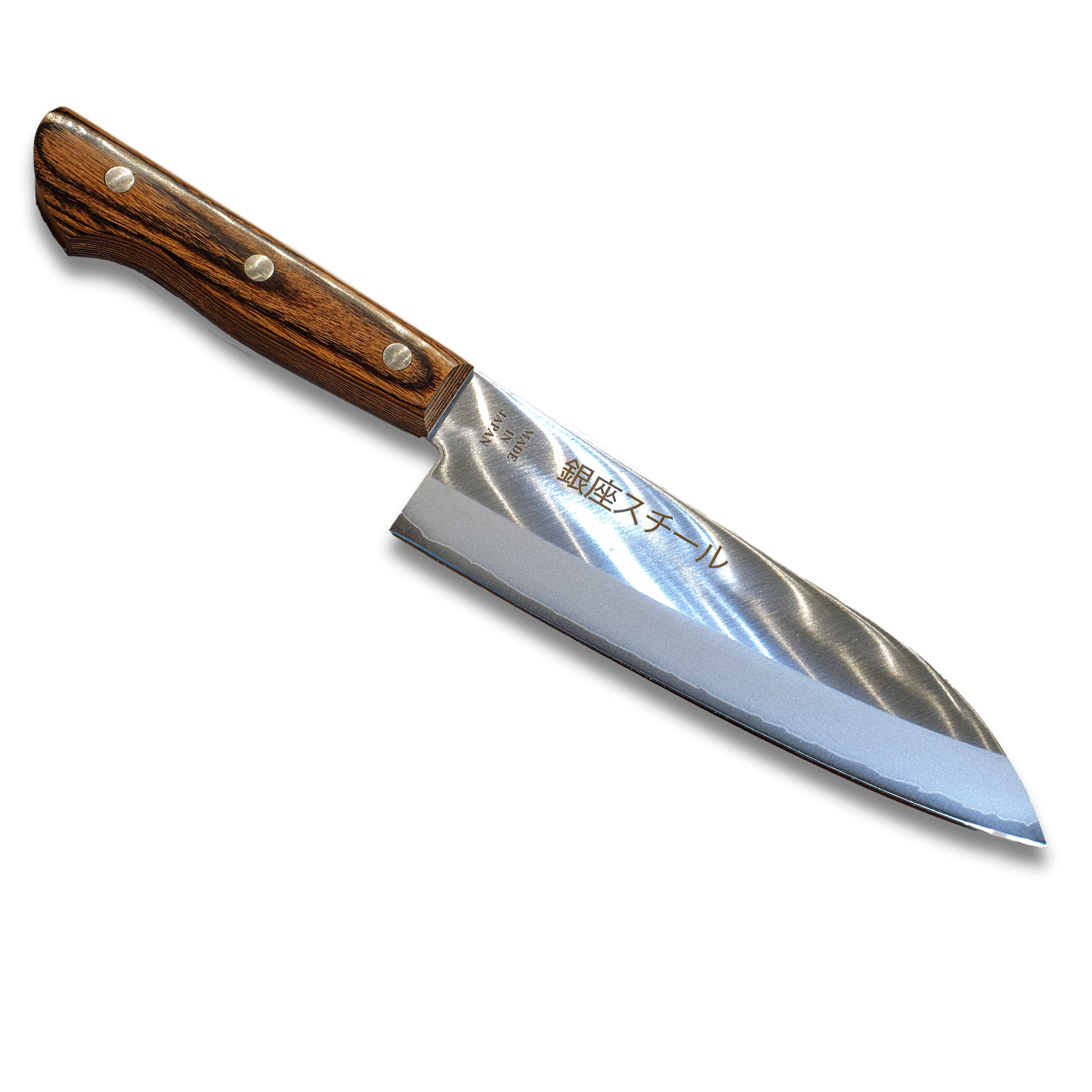
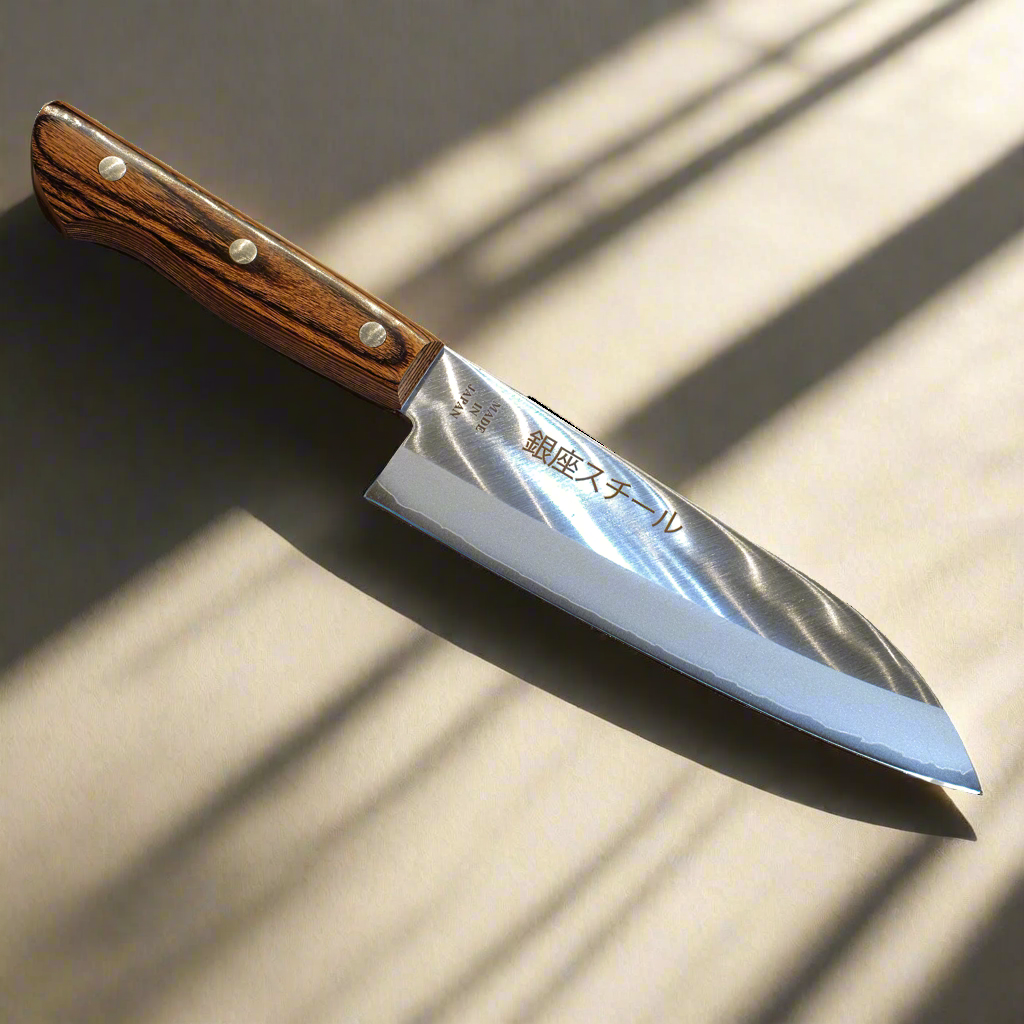
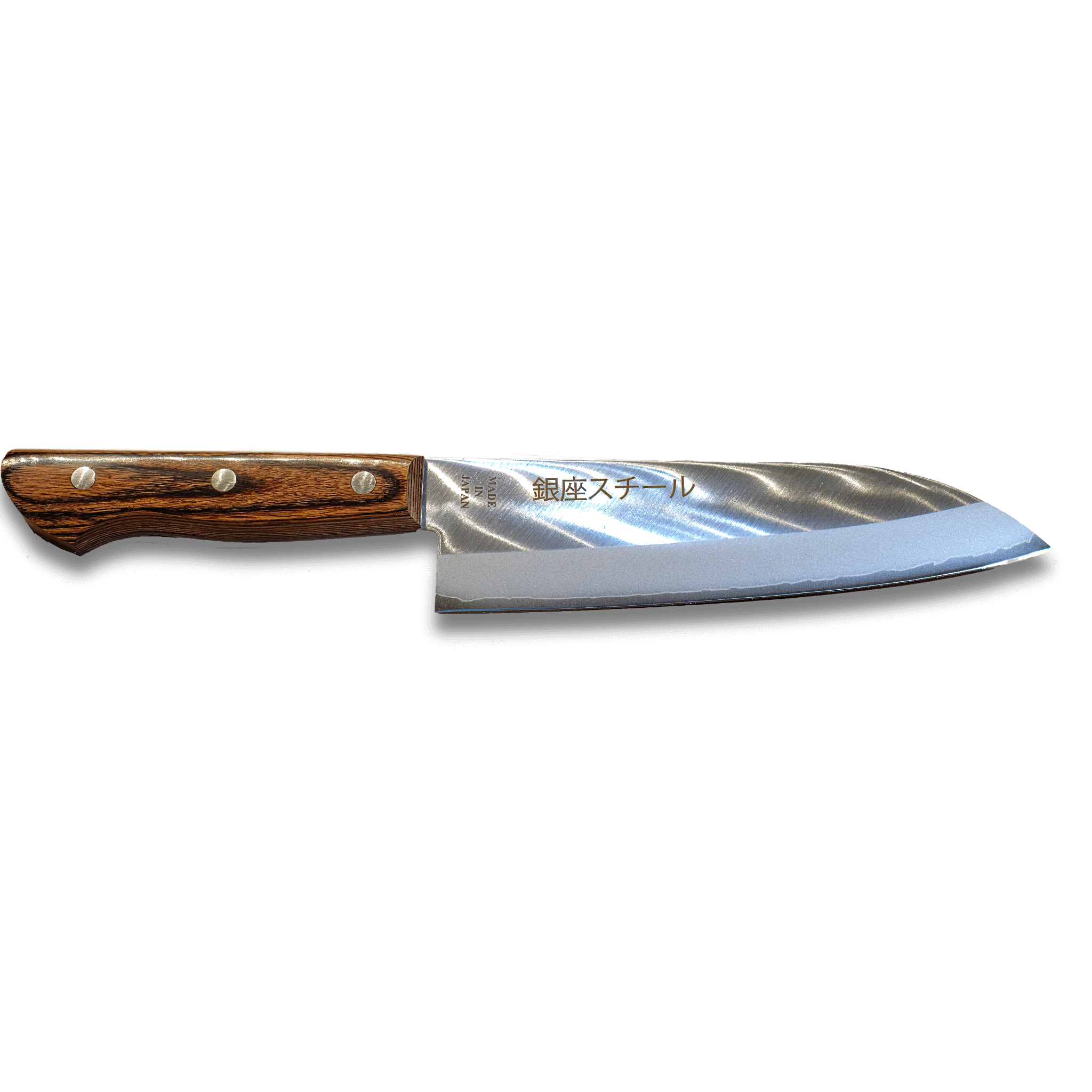
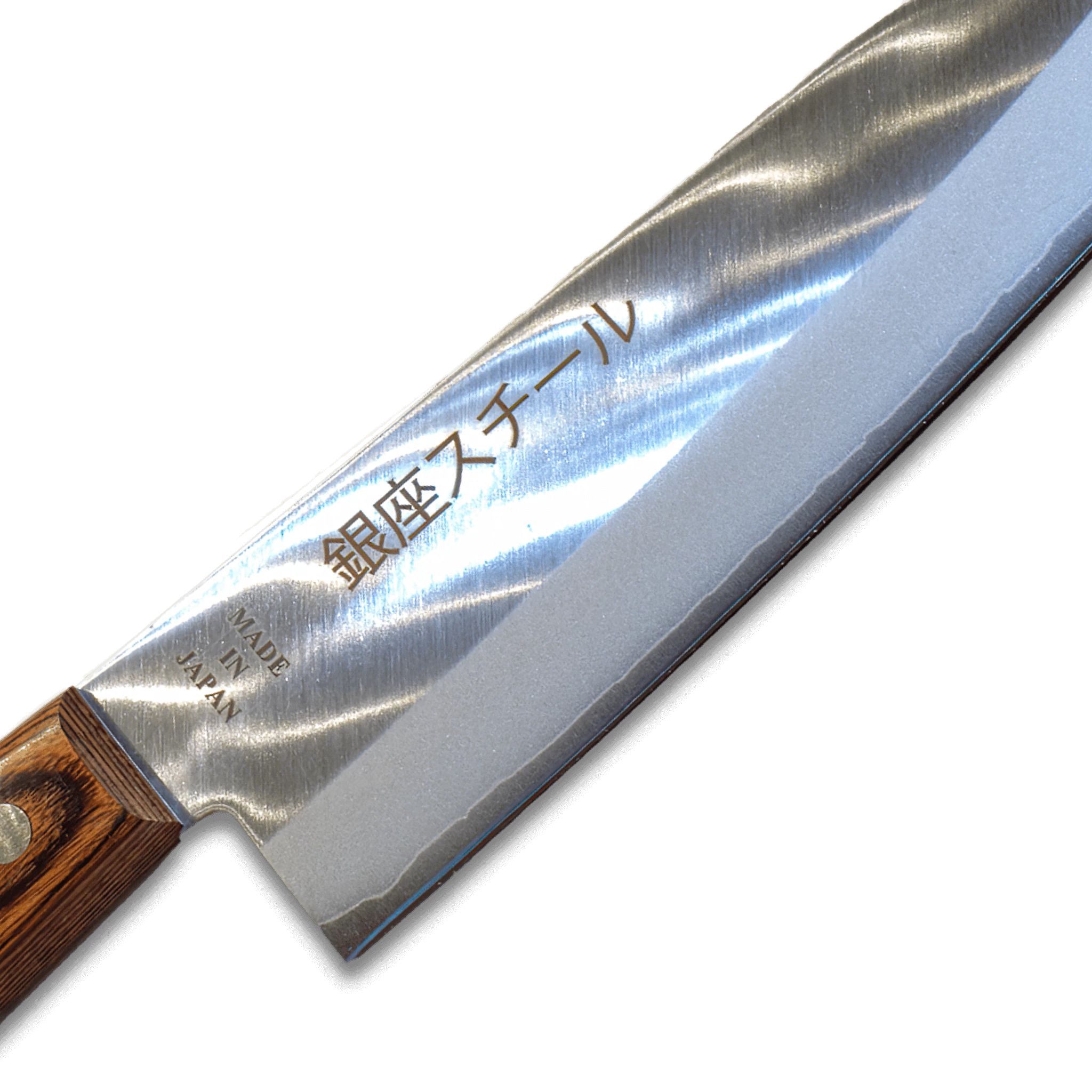
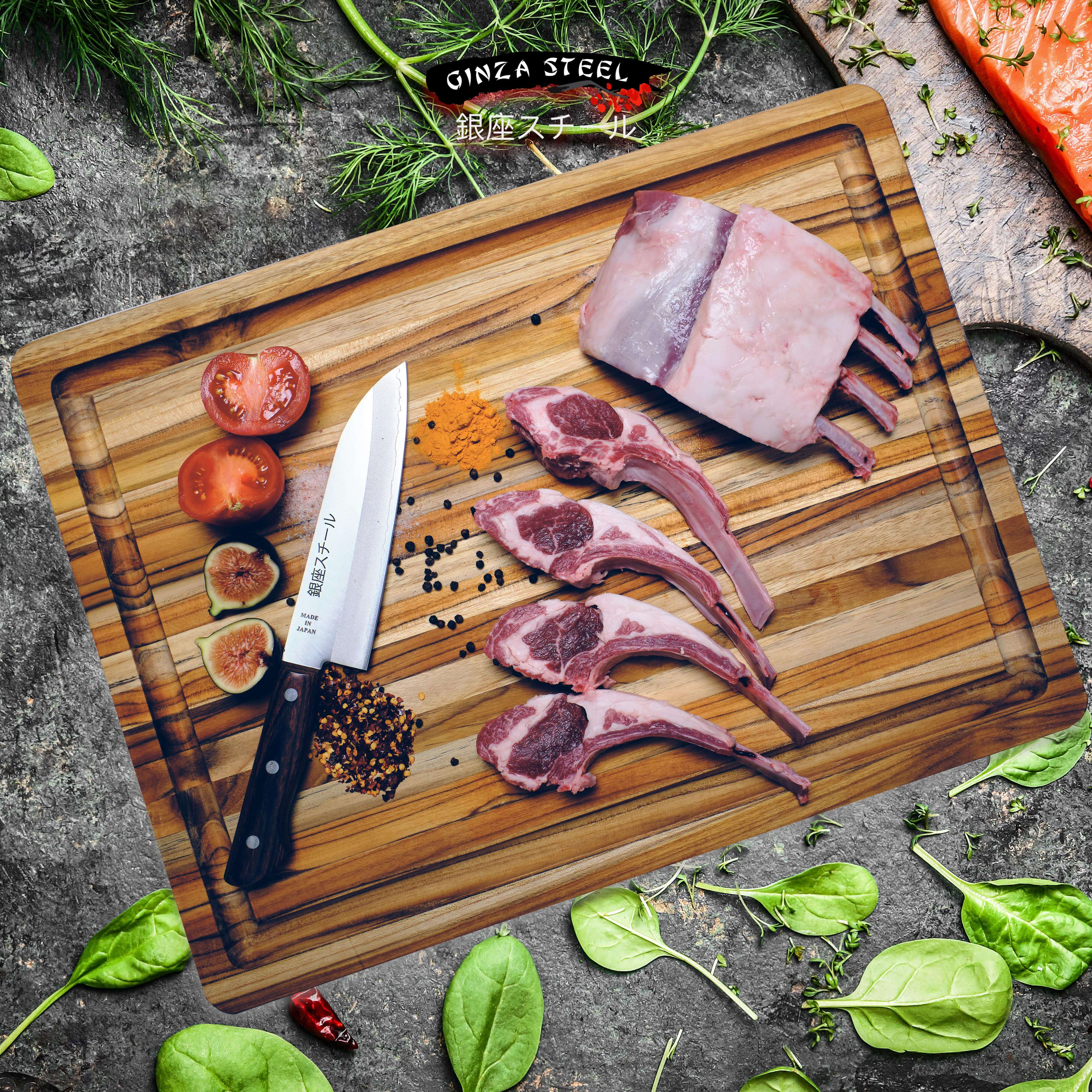
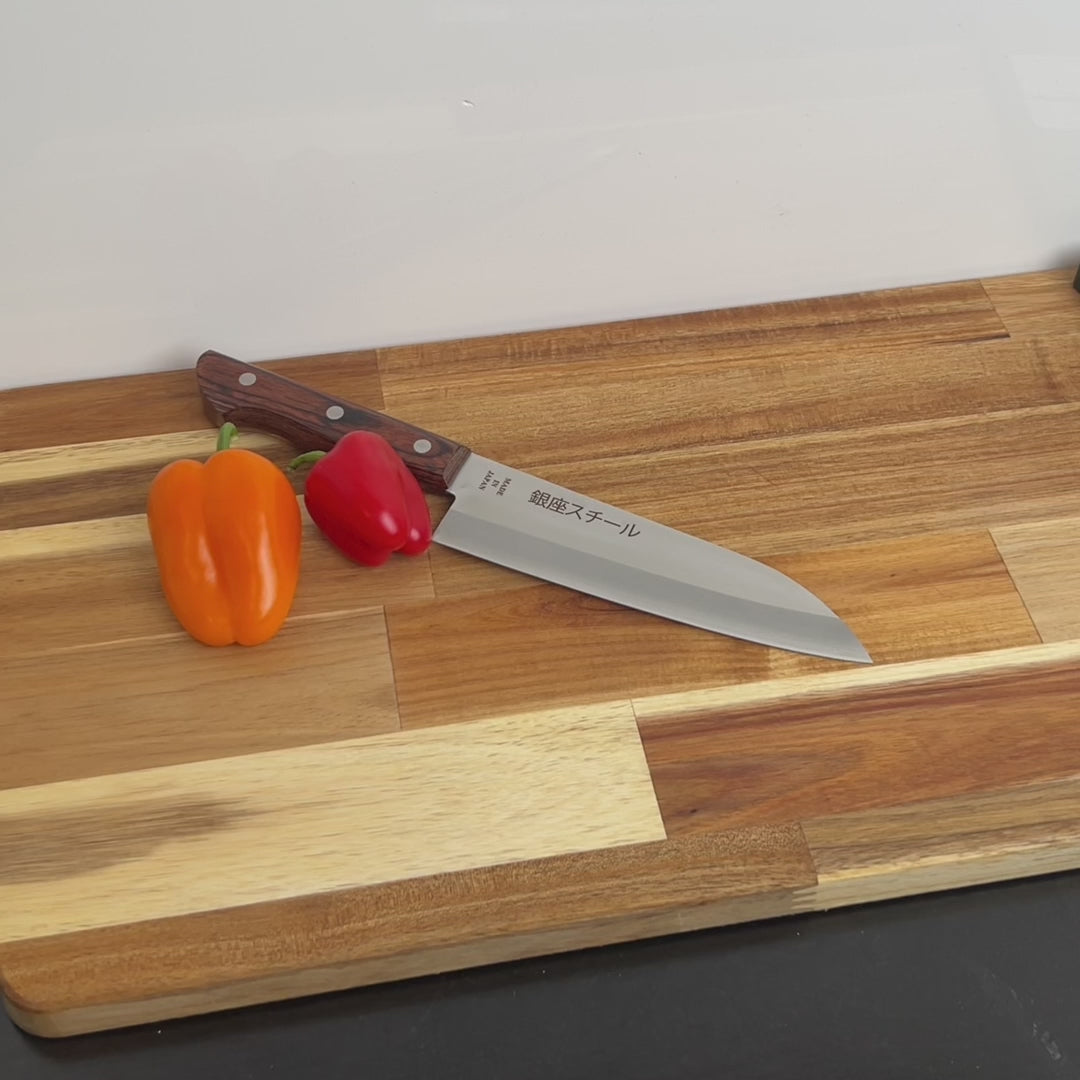

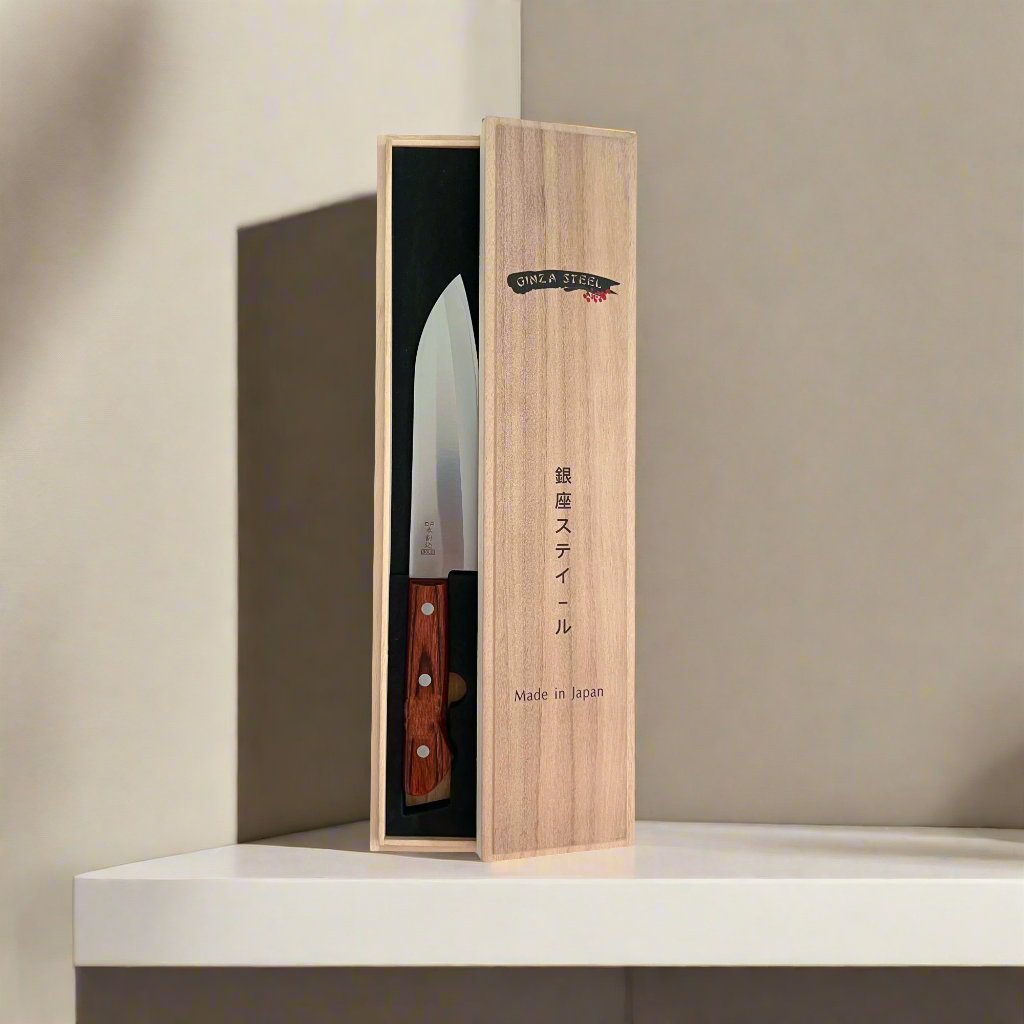
Yamato 165 - Couteau Santoku Lame 165mm
Dishwasher Safe : Non.
Specifications
- Country of origin : Japan 🇯🇵
- Knife Type: Santoku (It is an all-purpose knife that can prepare pretty much any ingredient)Blade Material VG1 DP CLAD Japanese Steel
- Blade Edge: Double Edge
- Handle: Bolster Mahogany Handle
- Blade Length: 165mm ( 6.5" )
- Weight : 139 g
- Overall Length: 280mm ( 11.2")
- HRC: 59 - 60
Care and Maintenance
Taking good care of your handmade knife is essential to ensure its longevity and maintain its cutting performance. Here are some care and maintenance suggestions:
Safe Handling:
- Handle the knife with caution, as it is extremely sharp. Always be mindful of your fingers and avoid contact with the blade's edge.
- Keep the knife out of the reach of children to prevent accidents or injuries.
Proper Use:
- Limit the knife's usage to cooking purposes only. Avoid using it for tasks like opening cans or boxes, which can damage the blade.
Cleaning:
- After each use, hand wash the knife using mild dish soap and warm water. Avoid harsh detergents or abrasive cleaners that can damage the blade or handle.
- Carefully clean both sides of the blade, the handle, and any other exposed parts.
- Rinse the knife thoroughly to remove all soap residue.
Drying:
- Dry the knife immediately after washing to prevent moisture buildup, which can lead to rust.
- Use a soft, clean cloth to wipe the blade and handle completely dry. Ensure there are no water spots left.
Storage:
- Store the knife in a safe and dry place, away from moisture and humidity.
- Consider using a knife sheath or blade guard to protect the blade from accidental damage and to prevent injuries when retrieving or storing the knife.
Sharpening:
- To maintain satisfactory cutting performance, it is recommended to re-sharpen the knife once or twice per month. However, this frequency may vary depending on the knife's usage and your personal preference.
- Use a sharpening stone or honing rod designed for kitchen knives to restore the blade's sharpness. Follow the manufacturer's instructions or seek guidance from a professional if you're unsure about the sharpening process.
By following these care and maintenance practices, you can ensure that your handmade knife remains sharp, safe to use, and lasts for a long time.
More details
The Santoku knife is the most popular type of knife that has evolved with Japanese culture.
It is an all-purpose knife that can prepare pretty much any ingredient. Although its birthplace is Japan, its convenience has spread overseas, and in recent years many non-Japan-made Santoku Knives have been found.
Yamato 165 par Ginza Steel - Couteau à main
| Fabriqué au Japon | 

Choisir les options








Je suis ravi d'avoir acheté ce couteau, il est très bien et rend la découpe des légumes plus simple et précise. Cela dit, le couteau vient avec une étiquette dans la boîte qui mentionne le prix est de 7500 YEN au Japon et ici il vendu deux fois plus cher voire plus quand il n'est pas en spécial, c'est un peu ordinaire.
Free Shipping to US & Canada
Enjoy free shipping on orders of $69 or more to the US and Canada
Easy Exchanges & Returns
We make it simple to exchange or return your purchase (Refund Policy)
In-Stock & Ready to Ship
Everything in stock locally in Ontario, Canada. Fast Shipping!
SSL Secure Website
Shop with confidence! Our website is protected with SSL encryption.
Let customers speak for us
from 1206 reviews
I had no idea a good knife could be so wonderful. It's very sharp, weighted nicely and aesthetically pleasing.

Christmas gift, so can’t really review until after Dec 25th. However, expectations are high, considering previous purchase. Thank you.

Sturdy steel butter knife. I was pleasantly surprised by the thickness of steel used which makes the bend function as desired which is to srape of the butter strings through the holes. Well thought and designed by not compromising on quality at all. Full marks! Japanese know it well and their craftsmanship is at another level.

Ingenious, well thought and designed product from Japan. Love it.

Ingenious, well thought and designed produxt from Japan. Love it.

Top notch quality of these products. Great utility tools coming out of Japanese craftsmanship.

I have quality Henkel knives, but this knife has a sharpness beyond what these knives can do. It's an important tool in my knife kit. I'm hopeful that it will be durable and have lasting power. So far, I am enjoying the experience of using it!

Great seasoning right off out of the box.

I’m a salmon and trout angler. I was happy with using this tool to pin bone pink salmon as it was able to pull two out at a time. I tried it on a fresh chinook last night though and wasn’t very impressed, I think needle nose pliers would have been more effective.

Received my carbon stainless steel wok extremely fast , customer support Natalie was extremely helpful with my questions and even provided resources to help me. 10/10, amazing site I can't believe I was hesitant at first. Will definitely be buying again from here, much better than big box stores - extremely high quality product.

Outstanding service. Super fast delivery. Awesome quality knife. Everything as advertised. TOP GUN!

Amazing knife set. Even the siccors is super sharp.

MIYABI 4000 FC 9.5-Inch Gyutoh Knife – Brown Handle

The Hayami 130 arrived promptly and very sharp, one of the sharpest knives I've ever received from a vendor. It's convenient to have it razor sharp out of the box. I use petty knives a lot, just above my use of the cleaver. This knife is beautiful and extremely functional. The next petty knife will be about 100mm.

Super knife . Shipping was fast . Got them after a couple of days only to Montreal
